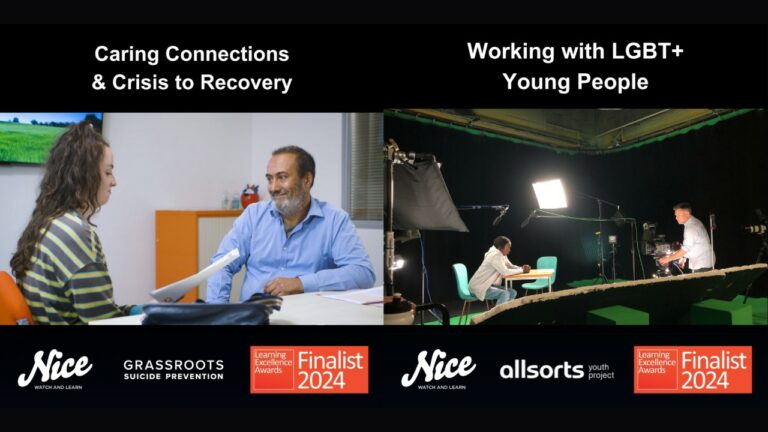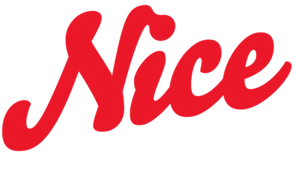This 
In the previous issue of e.learning age I laid the foundations for commissioning dramatized video for learning. I suggested that your priority for investment should be:
- script
- actors
- director
- production values
In this article I’m going to look at script in more depth.
Get emotional
The conflict between duty and emotion is one of the oldest and most powerful themes in drama. It’s the basis for a hundred cop shows, medical dramas and the entire Star Trek franchise. Management is all about keeping diverse and passionate individuals working like a well-oiled machine. Thus the workplace is a perfect setting for drama, and video drama is an ideal medium to discuss management issues. These range from clearly emotive issues such as bullying and sickness absence to subtle soft skills such as active listening.
Great, let’s commission some video drama to help us deal with these emotional matters! For us, this is where the real drama begins because managers are trained to be professional – to keep emotional distance. This natural caution around emotion can inhibit them when they become involved in the creation of dramatic content.
To create good drama the writing team (essentially the client and the writer) need to access their own feelings. The person commissioning the drama needs to be encouraged to embrace the emotion and conflict at the heart of their content, while the writer needs to deal with the issues and emotions in play as delicately as the manager would. Both the client and scriptwriter need courage. The more trust we can bring to this relationship the stronger the content will be.
Good script/better script
My previous article ended with the video below. It’s a dramatization of two short scripts about bullying in the workplace.
Both scripts were based on this brief:
A video scene showing a first conversation with a colleague about bullying. The characters work in a call centre, financial services/sales.
Training key learning points
- Bullying acts over time: one incident could be tolerated, repetition makes it unbearable.
- Bulling can be subtle: undermining integrity, setting up someone to fail, excluding or ignoring them can all be bullying tactics.
- If you feel bullied, you are being bullied.
- It may be very difficult for someone to say the words ‘I am being bullied’.
- If someone talks to you about being bullied, be supportive and take it seriously. Encourage them to take further steps.
- Further steps may be to confront the bully or ask for mediation.
The first part of the video is a production of an “Exposition” version of the script. This script puts the exposition (the explanations we need to easily understand the story) clearly into the speech of the characters. This is typical of many learning dramas which have been through a group review process. Reviewers make a list of comments beside a page of scripted dialogue. When these are literally incorporated what began as a convincing dialogue can end up more like a list of learning points; but it reads as compliant and so is approved.
It’s worth reflecting that this commonly used review process is similar in form to Soviet censorship. So is it any wonder that the resulting videos can read like propaganda?
Our first script is in this style. The dialogue is on-the-nose. Within these constraints it’s well written, consequently the film is pretty good. So what’s the fuss?
Continue watching to see a production of our “Emotional Truth” script. The difference is subtle, but enlightening. The scriptwriter’s craft has made the exposition implied, or dramatized. We’ve cut things out, but it’s actually a little longer. The language is more informal. The learning less on the surface. It’s more immersive. The result is better, more engaging.
Beyond the edge of frame
Corporate drama is a strange form with its own rules and restrictions. In TV shows and film there is time to develop characters and to draw us into their world. We have a more difficult challenge. There may be context for the viewer if our video is in context of some further learning, but even so we have to quickly establish characters and pull the learner into their world the moment they press the play button.
The actors and the director, and even the makeup artist and the costume stylist need a way into the fiction. They need a brief that brings the world of the characters alive so they can imagine the scene with depth. What lies beyond the edge of the frame?
A significant contribution towards this are the character descriptions. One might describe the characters in the scene as “two typical call-centre operatives”, what more do we need to say? For one thing, of course, we’re all individuals, so the “typical” notion is a dangerous one. More importantly, the director, cast and crew can’t be expected to know much about the organisational culture they are portraying, or about the story and emotional context of the script.
The writer can provide some of this with a character brief. Click Here for ours.
A good writer will do the research. Perhaps visit a call centre and get acquainted with some of the people who work there. If that’s not possible, talk with the client, review interview footage of the staff, ask about pay rates, day to day concerns and so forth.
In our example Frank, the victim, has distinct aspects that seem at odds with being bullied. He’s a young man in a workplace dominated by women, and he’s studying martial arts. This gives us some complexity and depth to work with. It also serves the thrust of the learning which is that victims are often ashamed and hide the fact that they are being bullied. It’s harder to see the signs in someone who seems to have every reason to be confident. The other details of Frank’s character show his more sensitive side. He’s now two-dimensional and nuanced, and that’s about all we need here to draw you into our fictitious world.
Lynn’s character is similarly constructed. She is the foil to Frank’s victim. Her mini-biography gives her credibility and a way for the actor to understand how the character fits into the workplace. The Presentation Notes give a key to the performance. And the Secret is an excellent set up for the relationship.
The idea of a mother and son type dynamic was one of the most powerful for everyone involved in the production. It helped us decide to cast someone with boyish looks. Wardrobe choose to put some badges on to the actor playing Frank and to give his outfit a hint of the schoolboy. Makeup worked similarly with his hair.
For the director and the cast the mother and son idea gave an immediate key to the dynamics of the scene and how it should feel.
Finally, we have a character description for the subject of the on-screen characters’ discussion – their boss. This pithy paragraph tells us about her personality and motivations.
As in the script, best practice in character descriptions means steering clear of procedural detail. You’re usually describing individuals who symbolically represent groups of individuals from the workplace. As such they can’t be all things to all people. If they are crafted as individuals rather than as cyphers – the whole viewing experience will be more convincing.
You can’t make a film that’s 100% convincing as a representation of a workplace, or the people within that workplace. In a sense, your workplace doesn’t exist – it’s a different world depending upon whose eyes you are looking through. But all people, whatever their role in life, have the same sorts of anxieties and concerns and go through the same sorts of dramas. Focus on making the drama strong and learners will pay attention to your message.
Further viewing
To give this article an extra dimension we’ve produced a video discussion between the video director, writer and cast.
In my final article I’ll discuss production values – what might be described as the glossiness of your production. I’ll be explaining how these are achieved and sharing versions of the scene filmed with different levels production value, so you can assess what affect these have on the learner experience.
Read the first article on ‘Video Drama For Learning’ here.
Read the third article on ‘Production Values’ here.







